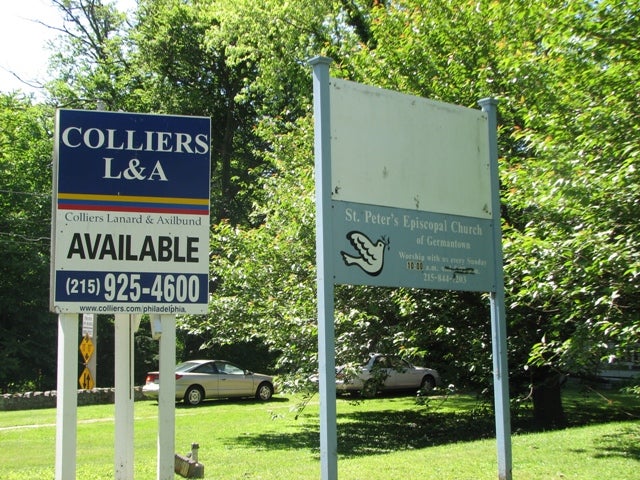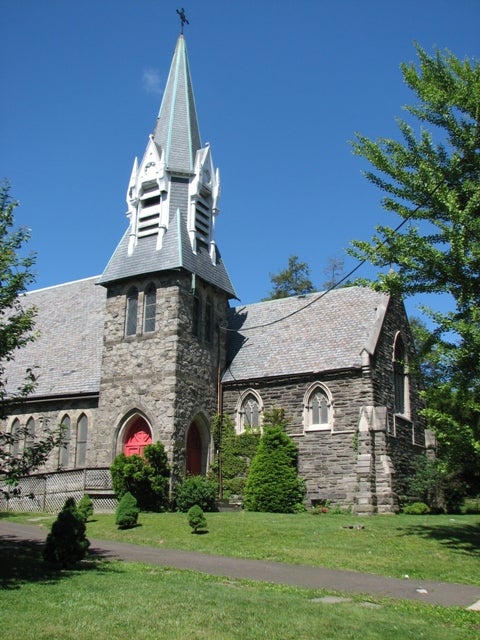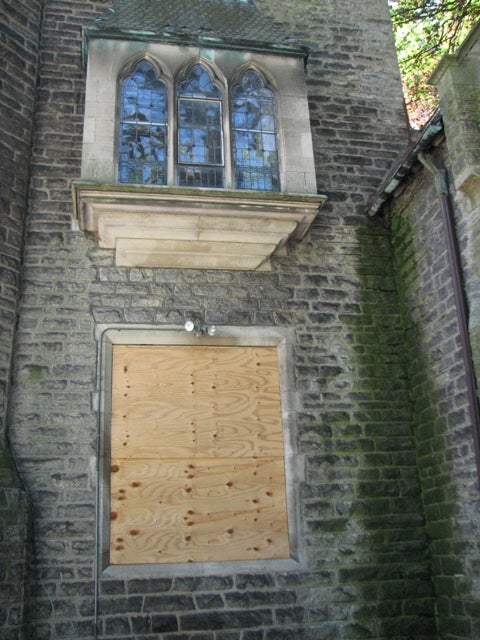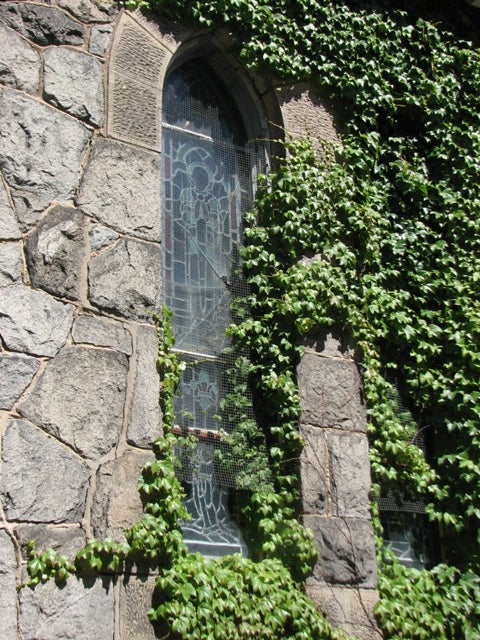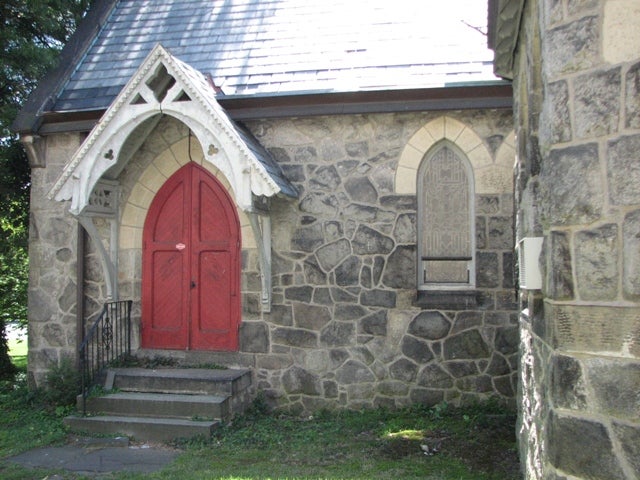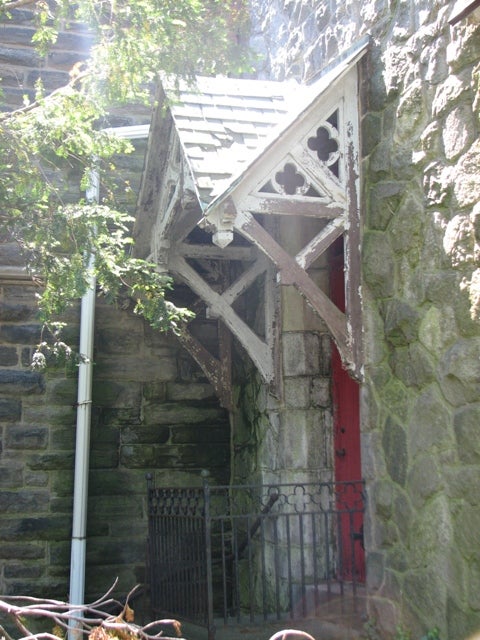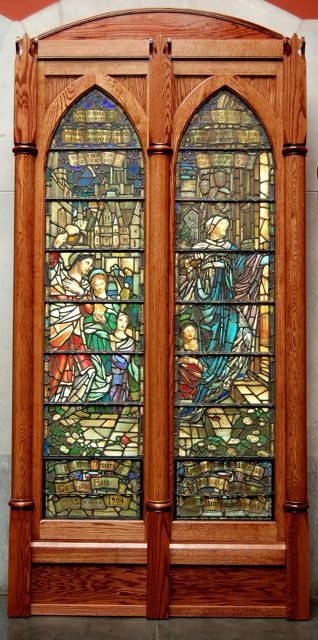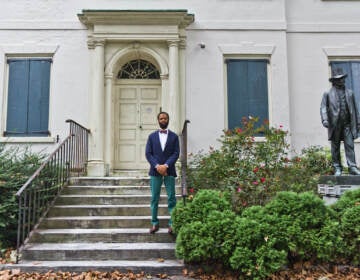Preservation Row: St. Peter’s windows reflect church/state debate
May 17, 2010
By Alan Jaffe
For PlanPhilly
The Pennsylvania Academy of the Fine Arts recently opened an exhibition of a pair of stained glass lancet windows by Violet Oakley and another pair by the Tiffany Studios, all of which the museum acquired from St. Peter’s Church in Germantown.
The devotional windows were made 100 years ago for St. Peter’s, which was designed a few years before PAFA by the same firm: Furness & Hewitt. The beautiful church at 6008 Wayne Avenue has been vacant for four years and the Episcopal Diocese of Pennsylvania is trying to sell the building, or at least in the meantime, the more than 30 religious windows that remain.
But the historical and architectural significance of the church is now the basis for a battle between the Diocese and the Historical Commission of Philadelphia.
While the commission allowed the sale and removal of the four Oakley and Tiffany windows last year in order to protect pieces of great artistic value, it has denied the Diocese’s application to remove the other stained glass windows that remain in the church, which was listed on the Philadelphia Register of Historic Places in 1965. The commission did not find overriding artistic or historical significance in those windows, but said they are character-defining features that should be retained and protected in place.
The Rev. Christine Ritter, property manager for the Diocese, said the commission is “infringing on our First Amendment rights.”
The Diocese wants to remove the windows, replace them with plain glass, and offer them to other Episcopal churches or sell them to other denominations or private buyers. “The longer the windows sit in that church, the more open they are to destruction by the elements and vandalism,” Rev. Ritter said.
The Diocese is also trying to sell the church building. “What if we sell to a contractor? The windows will mean nothing to anyone. These are religious artifacts, not secular,” Rev. Ritter said. “It doesn’t make sense for us not to remove them. Each year deterioration continues, and we want to preserve them.”
Some of the remaining windows in the church have been protected with an extra pane of Plexiglas. Other windows are sealed with plywood. Still others contain cracks and are exposed to the elements.
Elements of the mainly stone, slate and limestone buildings, including wood ornamentation that characterized Furness & Hewitt design, need painting and are deteriorating.
Ritter said there have been several potential buyers for the church property. “The problem is the extensive amount of work that will have to be done. It is difficult to sell at this point.”
Last December, the Historical Commission heard the Diocese’s application to remove the remaining windows. The commission had previously allowed the sale of the four windows because of their “great artistic value and historical significance,” because they weren’t secure in the abandoned church, and because PAFA agreed to hold them in perpetuity in its extensive Oakley collection. Oakley had been a student and faculty member of the academy.
While it saw merit in the removal of one other window, which depicts the first bishop of the Diocese, to the Diocese Church House, the commission turned down the application to remove the others because that would defy historic preservation standards and set a negative precedent.
Chris Kimmel, an attorney for the Diocese, said at the December hearing that the cost of restoring the remaining windows in the building would be $6 million and that potential buyers were “walking away” because of the windows.
Jonathan Farnham, executive director of the Historical Commission, responded that whether a buyer would be interested in maintaining the windows is not and has never been sufficient reason to justify removal of character-defining historic fabric of a historic building.
After the denial by the Historical Commission, the Diocese asked the Department of Licenses and Inspection to hear its case on First Amendment grounds. L&I refused to hear the case.
“They said go back to the Historical Commission, and that’s where it is,” Rev. Ritter said.
Violet Oakley’s stained glass windows, “The Wise and Foolish Virgins,” and Tiffany Studios’ “Saint Cornelius and Angel,” are on view at PAFA, 118 N. Broad St., through July 11. These windows are among only three Oakley window projects that survive, according to exhibition notes.
For more information about the PAFA exhibition, go to http://www.pafa.org/Museum/Museum-News/Museum-News/270/vobId__5292/
Contact the writer at alanjaffe@mac.com.
WHYY is your source for fact-based, in-depth journalism and information. As a nonprofit organization, we rely on financial support from readers like you. Please give today.




